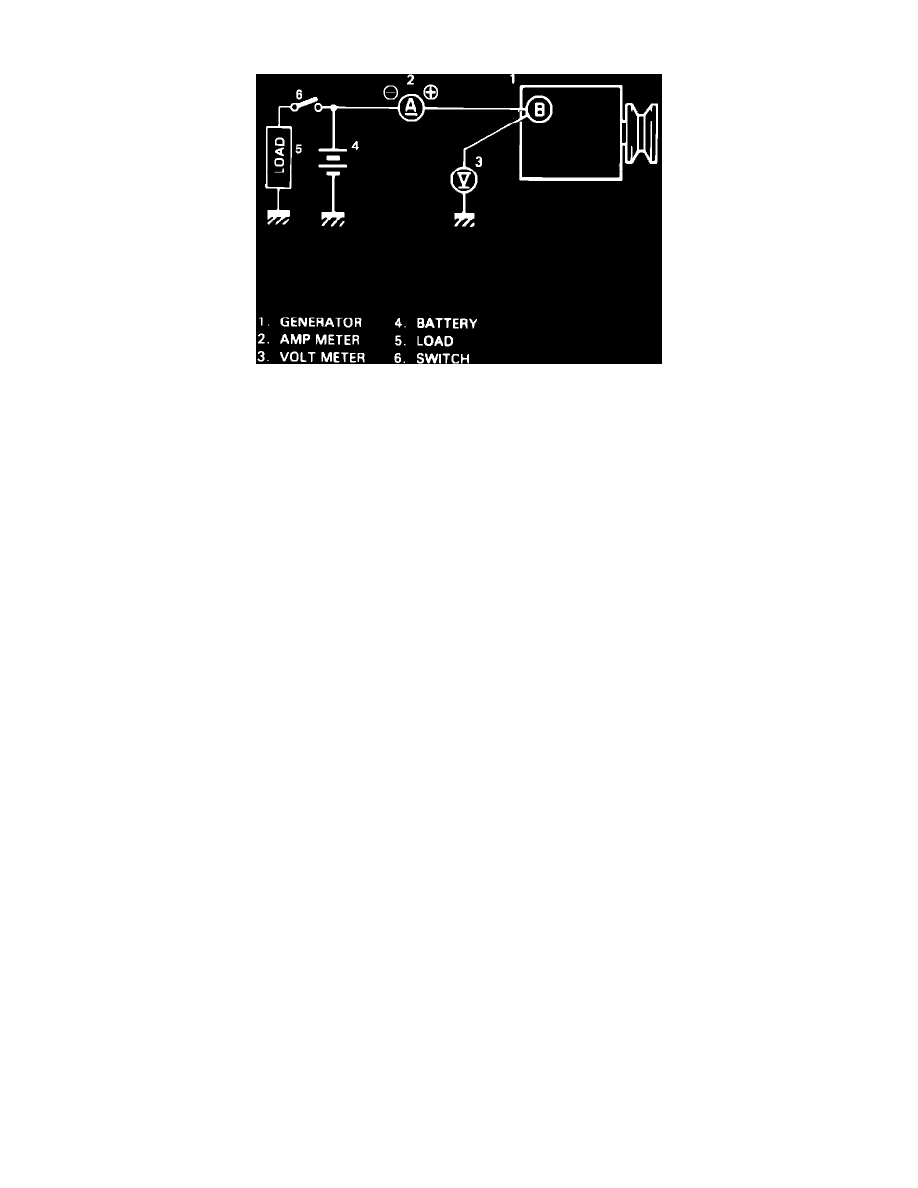Sprint-Import L3-061 1000cc 1.0L Turbo VIN 2 FI (1987)

Alternator: Testing and Inspection
Fig. 1 Alternator test connections
When testing alternator, observe the following:
1.
Do not reverse polarities of IG and L terminals.
2.
Do not short IG and L terminals. Always connect these terminals through a lamp.
3.
Do not connect any load between L and E terminals.
UNDERCHARGED BATTERY
1.
Check that undercharged condition has not been caused by accessories left on for extended periods.
2.
Check drive belt for proper tension.
3.
Inspect wiring for defects. Check that all connections are clean and tight, including slip connectors at alternator and bulkhead. Also check battery
cable connections at battery, starter and ignition ground cable.
4.
Connect voltmeter and ammeter as shown in Fig. 1. Connect voltmeter between alternator B terminal and ground. Connect ammeter between
alternator B terminal and battery positive terminal.
5.
Perform no-load check as follows:
a. Increase engine speed from idle to 2000 RPM and read meters. Note that voltage readings will vary with regulator case temperature.
b. If voltage is higher than 14.2-14.8 volts @ 77 degrees F, replace IC regulator.
c.
If voltage is below specification, check IC regulator and alternator by measuring voltage at B terminal while grounding F terminal. If voltage is
above specification, replace IC regulator. If voltage is below specification, test alternator.
6.
Perform load check as follows:
a. Run engine at 2000 RPM and switch on headlights and heater blower motor. Check that current is at least 20 amps. If less, alternator is
defective.
OVERCHARGED BATTERY
If an obvious overcharging condition exists such as spewing of electrolyte, proceed to unit repair section and check field windings for grounds and
shorts. If defective, replace rotor and test regulator with suitable tester.
